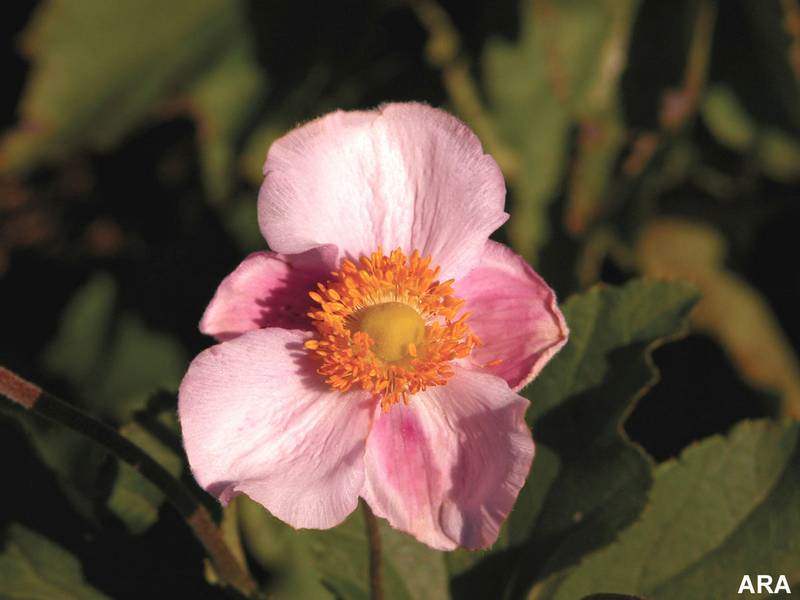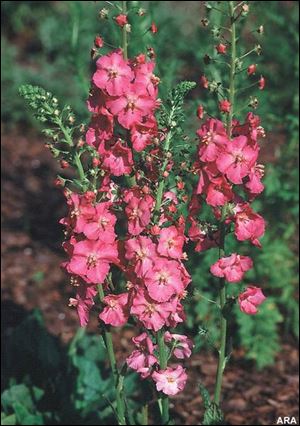
The Four Best Things You can do this Fall for Next Year's Spring Garden
9/21/2006
The perfect understory plant in areas with moist soil, Burpee s Anemone Richard Ahrens blooms from late summer through fall.
(ARA) - As the crisp fall air ushers in a new season, many gardeners may be left wondering: what now? Garden experts from across the country weighed in with their tips on the four best things you can do this fall for a fabulous spring yard and garden.

The perfect understory plant in areas with moist soil, Burpee s Anemone Richard Ahrens blooms from late summer through fall.
James A. Baggett, editor of "Better Homes & Gardens Perennials" magazine, suggests planning ahead for next spring. "A great time to start working on your spring garden, believe it or not, is in the fall. Fall is an especially good time to divide perennials, specifically daylilies, hostas, black-eyed Susans, Japanese and Siberian iris, and ornamental grasses," he says.
"The fall season is also an excellent time to plant new perennials-particularly bare-root plants. By planting in the fall, you are more likely to have larger plants with better blossoms the following spring. Perennials that lend themselves to fall planting include coneflowers, Oriental and Asiatic lilies, bleeding hearts, and lily-of-the-valley."
Some great perennials to plant in fall include those that bloom at the end of the season. Anemone Richard Ahrens is a long-lasting, beautiful perennial that provides much needed color to the late summer and fall garden. Single and semi-double blooms open bright pink then soften to blush as the season progresses.
It is a perfect understory plant in areas with most soil. This flower tops off between 24" and 36," is hardy in zones five through nine and requires partial shade.
Another perennial favorite is Verbascum Rosetta, an extra-tough, drought-tolerant charmer in both perennial borders and more naturalized settings. Covered with bright cherry-pink blooms all along its 18" to 36" flower spikes, this flower grows in zones 6 through 8 and in full sun.
"Fall is an excellent time for planting, and roses are no exception," says Steve Hutton, plantsman and president of Conard-Pyle Co.
Establishing roses in the fall is easy and an excellent way to ensure they'll be successful in the spring. Adds Hutton, "The weather and soil conditions are better in the fall, as opposed to spring when it tends to be cold, muddy and wet."
For fall color, Hutton recommends planting The Knock Out shrub roses during the closing months of summer. The flowers will bloom well through the end of September in most hardiness zones. Just remember to give them plenty of water and lots of sun.

With bright cherry-pink blooms, Burpee s Verbascum Rosetta is an extra-tough, drought-tolerant charmer in both perennial borders and more naturalized settings.
The cool weather during the early fall is a perfect time to prepare the ground for winter dormancy and spring planting. Plants at this time of year may not be actively growing above ground but are still working hard underneath the earth's surface to store nutrients needed for a long winter.
Troy Hake of Outsidepride.com, an online garden retailer, says that more and more people are recognizing the importance of their soil's health. Hake states, "The most important process you can do this fall to ensure your lawn's health and vigor and prevent it from straining to grow is aeration."
"Aeration significantly reduces regular lawn-maintenance requirements as well as decreases soil compaction, increases water retention and increases air circulation to plant roots. It also provides a direct path for air, water and nutrients to reach the grass roots thereby encouraging deep rooted growth."
Winter months are some of the deadliest times for deer destruction in the garden. "Deer overpopulation is rampant in much of the country," says James Messina of Messina Wildlife. "With no place to go and not much left to eat in the dead of winter, deer can wreak havoc on shrubs, trees and gardens and destroy new buds and leaves before they have a chance to grow."
To keep deer out, many homeowners are turning to earth-friendly alternatives like Deer Stopper. The only OMRI certified organic repellant made in the U.S., Deer Stopper has no adverse effect on plants, people or animals and works by smell and taste while coating plants with an odor that smells pleasant to people but detracts deer.